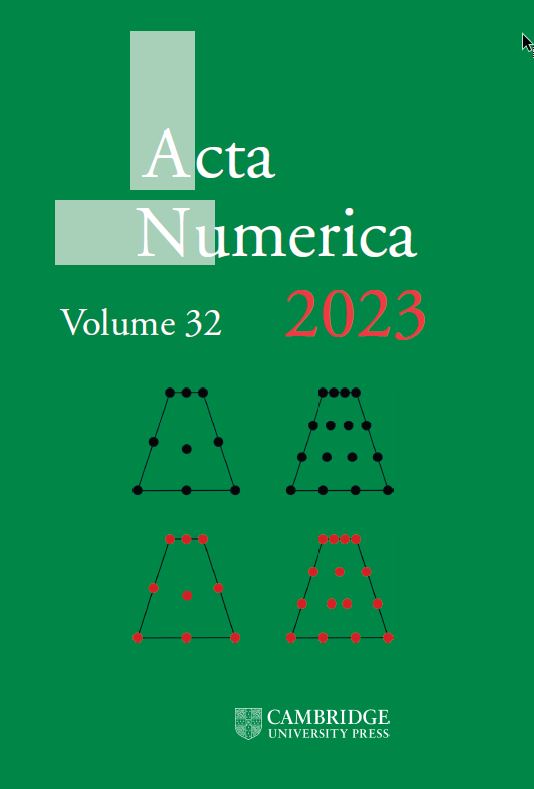Stochastic finite element methods for partial differential equations with random input data*
IF 11.3
1区 数学
Q1 MATHEMATICS
引用次数: 209
Abstract
The quantification of probabilistic uncertainties in the outputs of physical, biological, and social systems governed by partial differential equations with random inputs require, in practice, the discretization of those equations. Stochastic finite element methods refer to an extensive class of algorithms for the approximate solution of partial differential equations having random input data, for which spatial discretization is effected by a finite element method. Fully discrete approximations require further discretization with respect to solution dependences on the random variables. For this purpose several approaches have been developed, including intrusive approaches such as stochastic Galerkin methods, for which the physical and probabilistic degrees of freedom are coupled, and non-intrusive approaches such as stochastic sampling and interpolatory-type stochastic collocation methods, for which the physical and probabilistic degrees of freedom are uncoupled. All these method classes are surveyed in this article, including some novel recent developments. Details about the construction of the various algorithms and about theoretical error estimates and complexity analyses of the algorithms are provided. Throughout, numerical examples are used to illustrate the theoretical results and to provide further insights into the methodologies.具有随机输入数据的偏微分方程的随机有限元方法*
在物理、生物和社会系统的输出中,由随机输入的偏微分方程控制的概率不确定性的量化,在实践中需要对这些方程进行离散化。随机有限元法是一类广泛的算法,用于具有随机输入数据的偏微分方程的近似解,其中空间离散化是由有限元方法实现的。完全离散的近似需要进一步的离散化,因为解依赖于随机变量。为此,已经开发了几种方法,包括侵入性方法,如物理自由度和概率自由度耦合的随机伽辽金方法,以及非侵入性方法,如随机抽样和插值型随机搭配方法,其中物理自由度和概率自由度是不耦合的。本文对所有这些方法类进行了综述,包括一些最新的发展。详细介绍了各种算法的构造以及算法的理论误差估计和复杂性分析。在整个过程中,数值示例用于说明理论结果并提供对方法的进一步见解。
本文章由计算机程序翻译,如有差异,请以英文原文为准。
求助全文
约1分钟内获得全文
求助全文
来源期刊

Acta Numerica
MATHEMATICS-
CiteScore
26.00
自引率
0.70%
发文量
7
期刊介绍:
Acta Numerica stands as the preeminent mathematics journal, ranking highest in both Impact Factor and MCQ metrics. This annual journal features a collection of review articles that showcase survey papers authored by prominent researchers in numerical analysis, scientific computing, and computational mathematics. These papers deliver comprehensive overviews of recent advances, offering state-of-the-art techniques and analyses.
Encompassing the entirety of numerical analysis, the articles are crafted in an accessible style, catering to researchers at all levels and serving as valuable teaching aids for advanced instruction. The broad subject areas covered include computational methods in linear algebra, optimization, ordinary and partial differential equations, approximation theory, stochastic analysis, nonlinear dynamical systems, as well as the application of computational techniques in science and engineering. Acta Numerica also delves into the mathematical theory underpinning numerical methods, making it a versatile and authoritative resource in the field of mathematics.
 求助内容:
求助内容: 应助结果提醒方式:
应助结果提醒方式:


